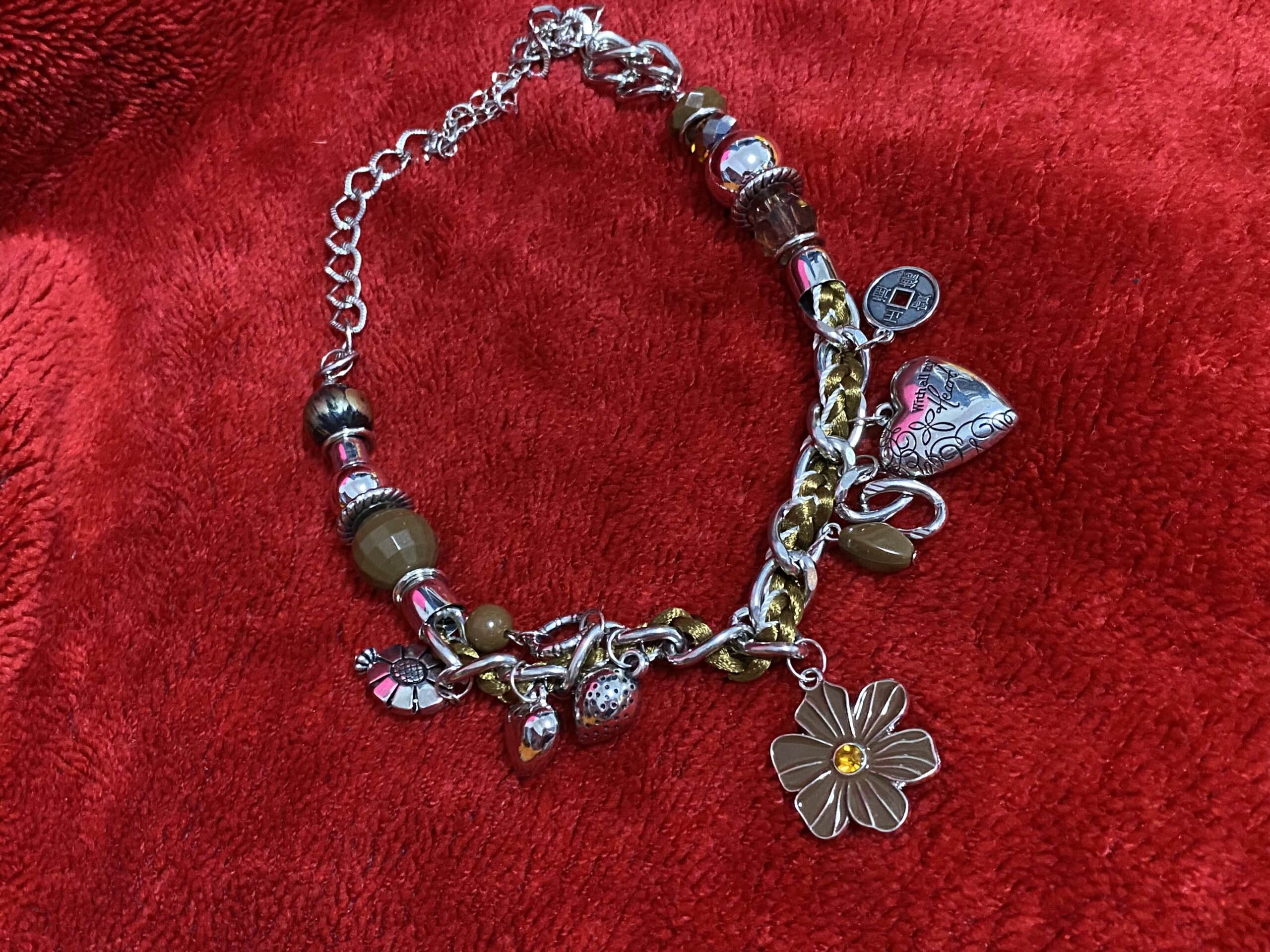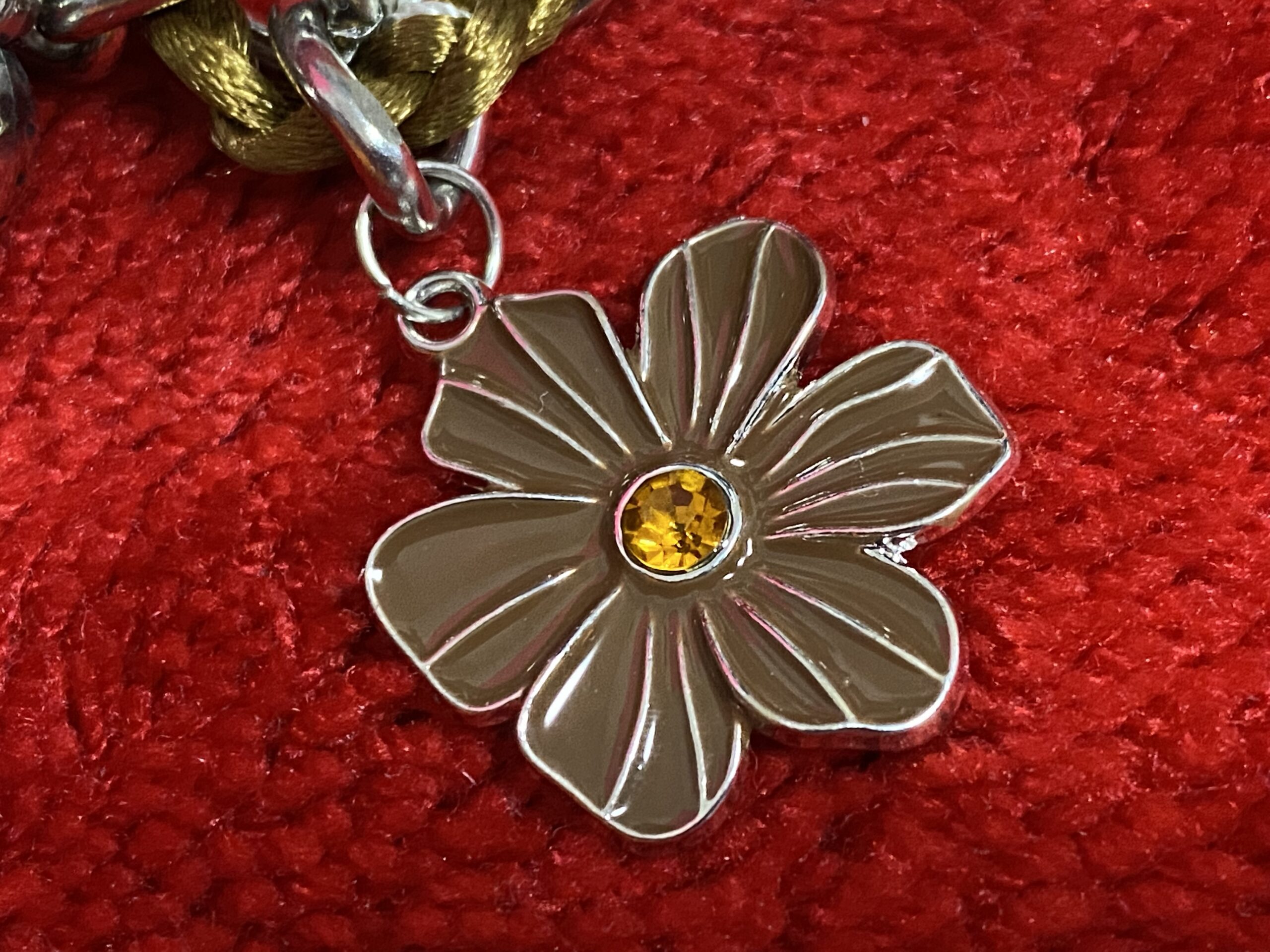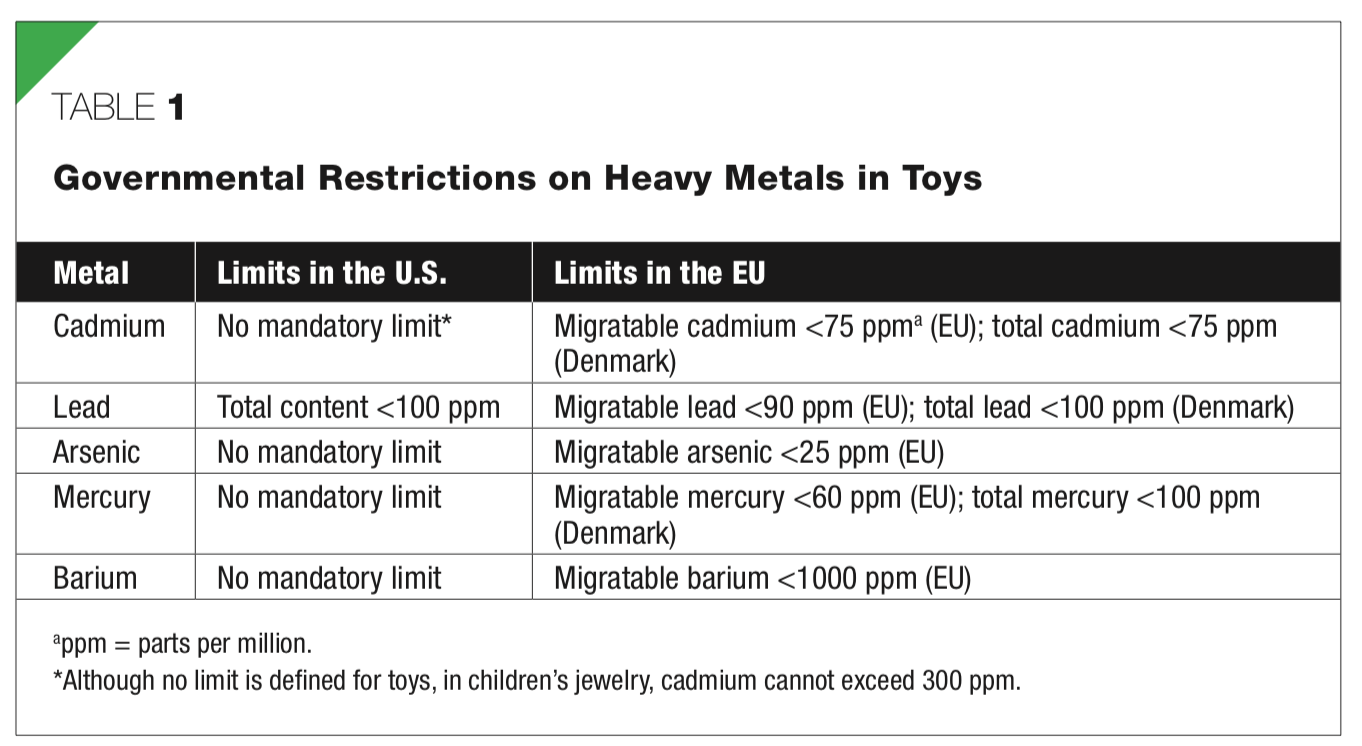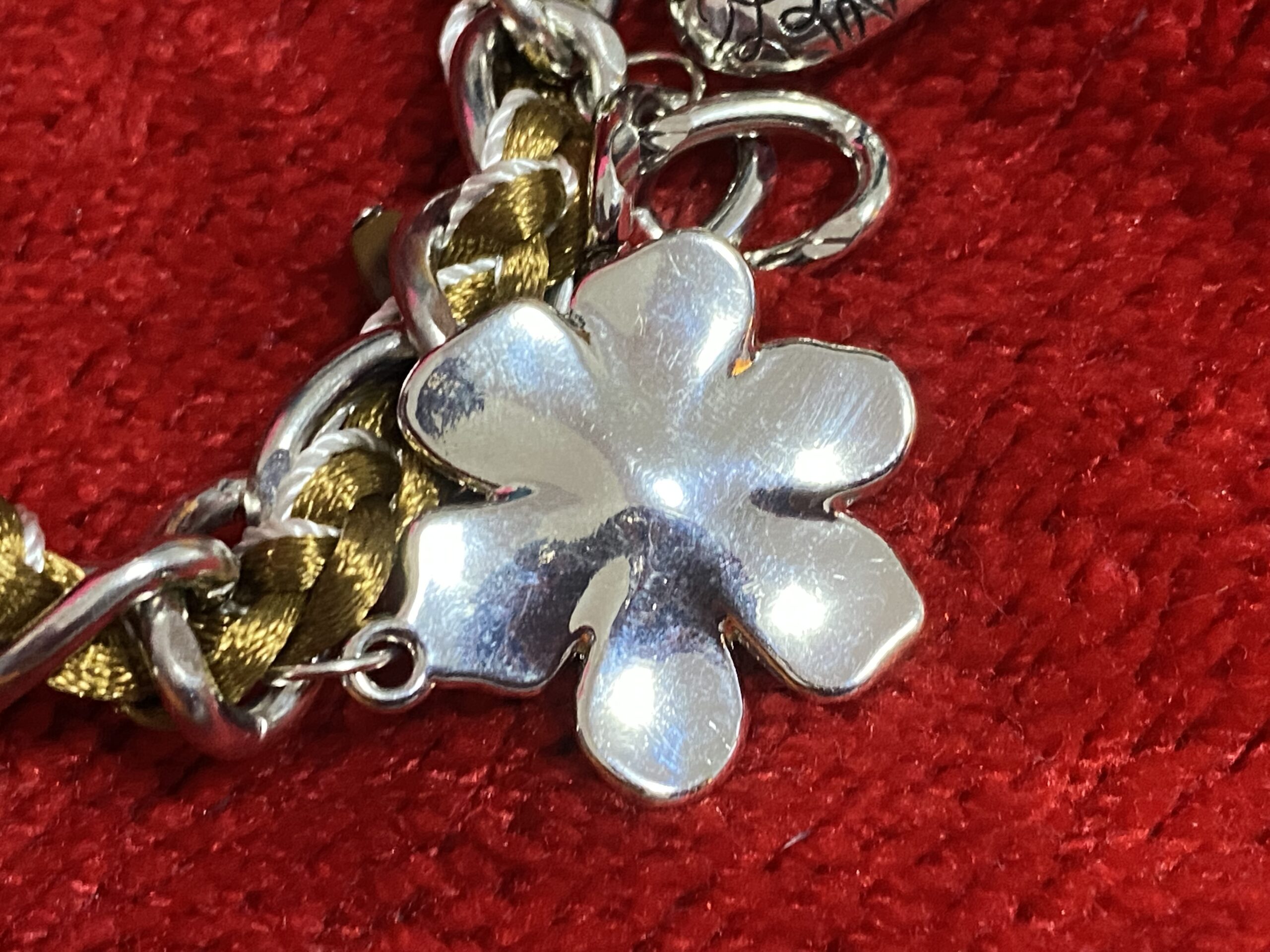Paparazzi necklace charm – brown enamel flower with orange center “jewel”: Positive for Mercury, Arsenic, Lead and Cadmium.

 Published: January 1, 2022
Published: January 1, 2022
Scroll down for full XRF Test results for the charm pictured.
IMPORTANT NOTE: This is NOT testing that can be done with a home test kit. The home test kits that many people are using to test this Paparazzi jewelry are neither accurate, nor reliable. They ARE NOT designed to test consumer goods for Lead (or other heavy metals) — and they are a cheap knock-off of the genuine 3M LeadCheck® kits [which are also, incidentally, only designed to test for Lead in paint]. These knock-off home Lead test kits (that people are buying on Amazon – link) give FALSE POSITIVES on non-Leaded metallic substrates – including Zinc. Please do not use any home test kits to test jewelry for Lead — you will be wasting your money!
There are only two way to test these Paparazzi pieces for Lead or other toxicants (heavy metals):
- With XRF testing, which is what we use here, and is the testing methodology used by the United States Consumer Product Safety Commission to screen for heavy metals
- By sending it to an accredited lab for testing (using digestive analysis, or other sophisticated methodology).
The reason we do this testing (using XRF technology) and report these test results here on LeadSafeMama.com (and the reason this information is NOT behind a paywall) is because this information is otherwise not attainable by the consumer. Our goal is to give consumers access to free science-based (replicable, accurate) information they might not otherwise have access to — given the very high cost for the instrumentation required to do this testing is completely out of reach of most consumers. [The annoying pop-up ads on this website help to cover the cost of the work we do… I apologize in advance if they are distracting!]
Some additional reading on this website that is relevant to this post:
- Paparazzi Ring that was tested
- Paparazzi Earrings that were tested
- Response to Paparazzi corporate statement in December of 2021
- Overview post about testing done for the results reported on this website
- Post about testing using reactive agent home test kits
- All posts on this website that are in the Paparazzi category
Reading #1) XRF reading on flower charm, brown enameled side
60-second reading
- Lead (Pb): non-detect
- Cadmium (Cd): 17 +/- 4 ppm
- Mercury (Hg): 1,891 +/- 39 ppm [This is an alarming amount of Mercury!]
- Bromine (Br): non-detect
- Chromium (Cr): 53 +/- 16 ppm
- Vanadium (V): 528 +/- 55 ppm
- Copper (Cu): 89,200 +/- 800 ppm
- Zinc (Zn): 47,100 +/- 500 ppm
- Arsenic (As): 465 +/- 7 ppm
- Selenium (Se): 2,972 +/- 40 ppm
- Titanium (Ti): 3,370 +/- 101 ppm
- Tin (Sn): 1,044 +/- 18 ppm
- Barium (Ba): 580 +/- 33 ppm
- Bismuth (Bi) 206 +/- 6 ppm
- No other metals detected in consumer goods mode.
Reading #2) XRF reading on flower charm, plain metal back side
60-second reading
- Lead (Pb): 52 +/- 19 ppm
- Cadmium (Cd): 46 +/- 11 ppm
- Mercury (Hg): 153 +/- 40 ppm
- Bromine (Br): 38 +/- 8 ppm
- Chromium (Cr): non-detect
- Copper (Cu): 842,100 +/- 500 ppm
- Zinc (Zn): 151,500 +/- 400 ppm
- Titanium (Ti): 426 +/- 130 ppm
- Niobium (Nb): 475 +/- 31 ppm
- Tin (Sn): 4,111 +/- 55 ppm
- Barium (Ba): 89 +/- 55 ppm
- Bismuth (Bi) 1,015 +/- 18 ppm
- No other metals detected in consumer goods mode.
For some context:
- Lead is toxic to children in paint / glaze or coatings at 90 ppm and up. It is considered illegal for items intended for children at 90 ppm and up in an item’s surface coating, and 100 ppm and up in the item’s substrate.
- Cadmium is considered unsafe for children at levels as low as 40 ppm and up. Cadmium is considered toxic (and illegal) in jewelry intended for use by children at levels of 300 ppm and up.
- Antimony is not currently subject to any Federal regulatory limit / does not have total content restrictions based on toxicity concerns — but is known to cause cancer in rats at low levels of exposure.
- Total content for Mercury and Arsenic in items intended for use by children is also not currently regulated or limited (specifically, total content, as detectable by XRF analysis).
- Lastly, none of these limits or considerations apply to items intended for use by adults — even though these metals are known to be toxic.
Continue reading below image, or click the table image to read more about the study that created the table below.
For those new to this website:
Tamara Rubin is a Federal-award-winning independent advocate for consumer goods safety and a documentary filmmaker. She is also a mother of Lead-poisoned children. Tamara’s sons were acutely Lead-poisoned in August of 2005. She began testing consumer goods for toxicants in 2009 and was the parent-advocate responsible for finding Lead in the popular fidget spinner toys in 2017. Tamara uses XRF testing (a scientific method used by the U.S. Consumer Product Safety Commission) to test consumer goods for toxicants (specifically heavy metals), including Lead, Cadmium, Mercury, Antimony and Arsenic. All test results reported on this website are science-based, accurate and replicable. Items are tested multiple times to confirm the test results for each component tested. Please click through to this link to learn more about the testing methodology used for the test results discussed and reported on this website.
Never Miss an Important Article Again!
Join our Email List


 Published: January 1, 2022
Published: January 1, 2022

